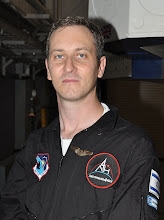 |
| The plane that brought me to Israel |
From my position here over the Atlantic ocean, at 624mph at 35000ft, I marvel both looking back and forward in time.
Yes, jets aren't very amazing anymore. Many of them fly every day from here to there, even half-way across the globe. Heck, with our short attention span and impatience of needing this year's iPhone or the newer, better, necessary gadget, even the space shuttle is a boring subject for most people. But I digress. Our planet shrank by orders of magnitude when airplanes overtook trains and ships as a human transportation devices. In short hundred years airplanes have become very safe (human rated even to the very young and old), obviously have a business case - despite airline financial problems, we're still flying, aren't we? But think about it beyond the shroud of commonplace - I am able, with training that constitutes a pamphlet and a three minute video about what to do in an emergency, to sit in this vehicle and get from the new world to the old world in about half a day. Fantastic. Try to describe that to 19th century scientists who were concerned that traversing land too fast on a train would confuse people too much due to the time of day shifts, or that cows watching trains moving at high-speeds of thirty miles an hour would stop producing milk. Airplanes enable so much, from ordering merchandise from the far-east and getting it after a few days to enabling an Israeli to work in the United States and in a day reach his home-town and meet his parents...
Indeed, the world today is in many ways a much smaller place than it used to be. Just in the last decade and a half its virtual dimensions diminished even more thanks to the Internet. True, the Internet changed and augmented accessibility and provided a platform for much more immediate, albeit superficial, communication. Alas, so far the Internet hasn't created a valid substitute to face to face meetings, to shaking hands or to giving one's family a hug. The sensory party of actually meeting a person compared to a video conference, e-mail, chat, blogs or social media, is much akin to listening to music on the radio compared to being at a live concert. Better than no communication? Yes. In addition personal communication and human touch? Sure. Complete substitute of the analog experience? I say absolutely not. Just think - is watching Paris on the best screen a real substitute to strolling its streets, interacting with the people and ordering a pain-chocolat at a corner Patisserie? Regretfully, no.
We're a forward looking, inventive and indefaticable race. I can hear the cynics go "Pfft" just about now, citing all the wars we're engaged in, rich-poor polarization, totalitarian regimes, the turmulous twentieth century, first decade of the twenty first century, global warming, oil spills, etc. But beyond all that muck of faults and mistakes lies the will to try. Even if not always successfully, we keep trying to improve.
 |
| The Concorde ultrasonic jet airplane |
I am looking forward for a time when I'll be able to go door-to-door from Colorado to my hometown of Haifa in a lot less than the twenty six hours that it takes today. Yes, compared to the months on a horse and ship it would take me a 150 years ago it's nothing, but what if it took only six hours? How about three? Wow.
In computer software the rule of 90/10 is common knowledge. It means that usually 90% of the work will be necessary to get the last 10% results. For example, improving reliability of a system from 99% to 99.9% is much easier than from 99.9% to 99.99%. Why would you want to do that, you ask? Well, punch in the numbers for a bank with millions of transactions a day and you'll get the picture. The same principal applies to other domains. For example, if you ever moved between homes you realize it takes a very long time to finish packing everything once you're already 90% done. Or clean the last bit to make your mother-in-law incapable to find dust anywhere. Such is also the case with transportation.
Improving on both speed and price of transporting people is no easy task. From the scientific standpoint faster transportation is known to be possible. We know people can travel much higher speeds and generally withstand much higher acceleration than that of a current airliner. We already have life-support systems that sustain people for months in a hostile environment of vacuum and extreme temperatures. The next revolutionary step in human transportation should be suborbital point to point. It is possible. Today. Will I see it in my lifetime? I really hope so. We have the science, rocketry and human performance envelope all figured out. So what's the delay? The main hurdles for it may be similar to the factors that took the Concorde down. However, with enough time and lowering cost, resulting from the suborbital tourism and research industry that is so close to starting, maybe I will get to see it after all.
Suborbital point-to-point is not trivial.
Ah... The time I have to think about such future greatness is still much shorter than the time people had on ships or trains. Would you look at that - I'm practically over Europe already, only about 2,700 miles to Israel according to the screen on the back of the seat in front of me...

 Space Shuttle Launch Poll Results
Space Shuttle Launch Poll Results













No comments:
Post a Comment